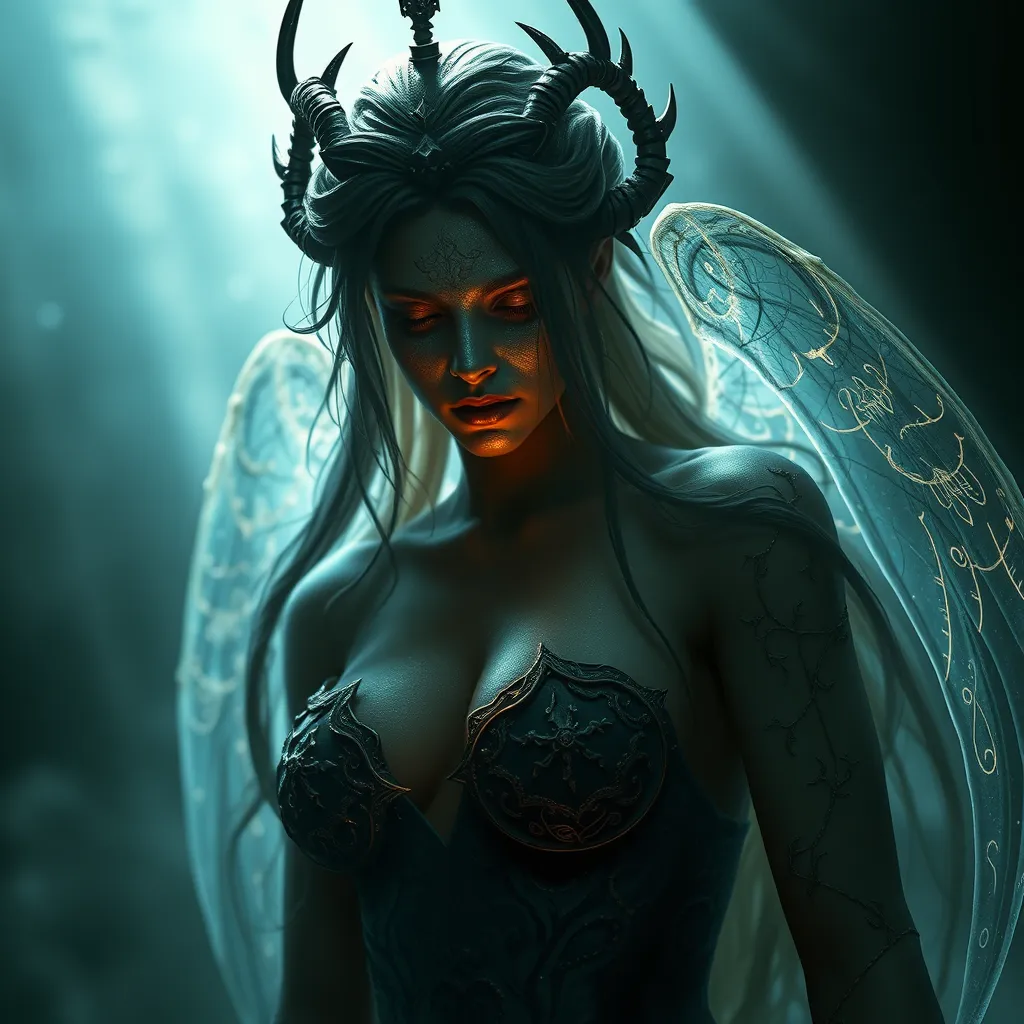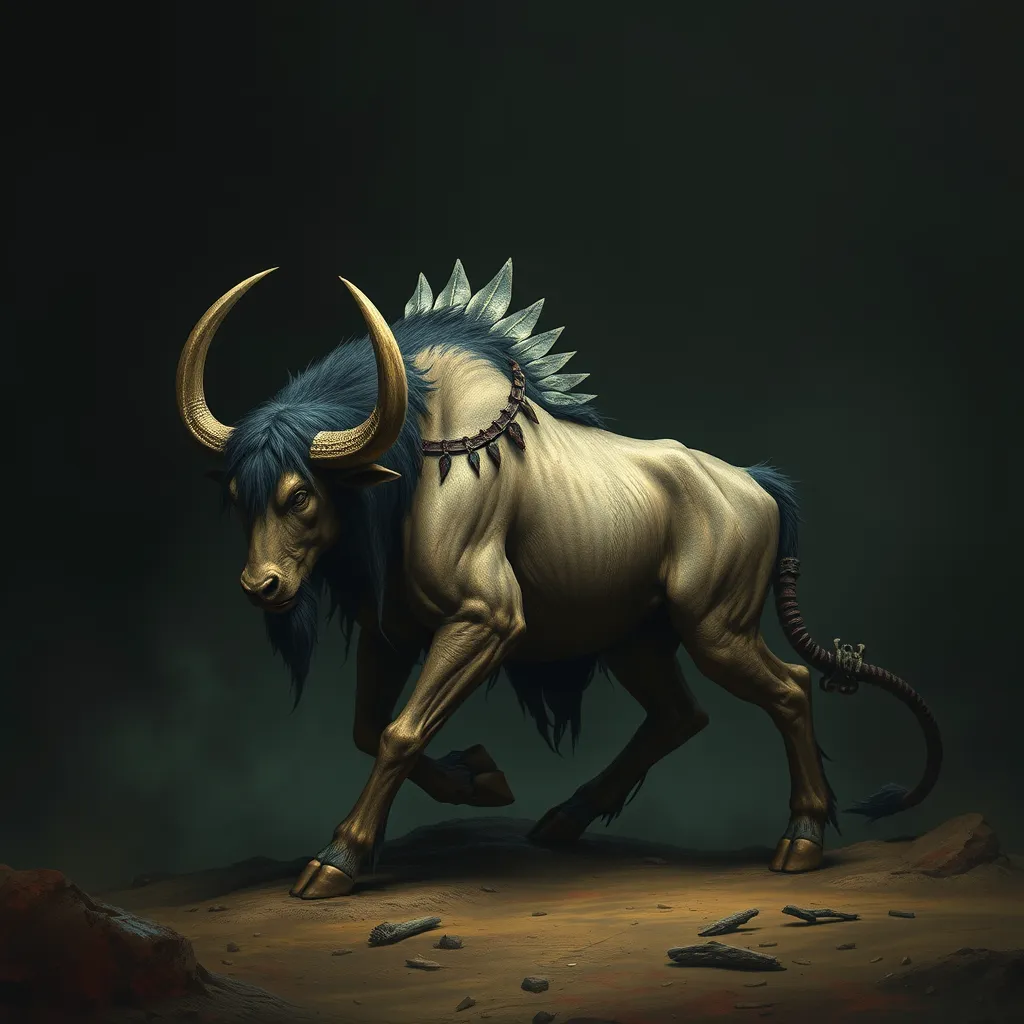The Nymph’s Curse: Exploring the Dark Side of Nymph Lore
I. Introduction
Nymphs are enchanting figures that populate the mythology and folklore of various cultures, often depicted as beautiful, semi-divine beings closely intertwined with nature. They embody the very essence of the elements they represent, such as water, trees, and mountains, and are typically portrayed as youthful, alluring, and ethereal.
However, beneath their captivating exterior lies a duality that can be both mesmerizing and perilous. Nymphs, while symbols of beauty and grace, also possess a dark side that reveals their capacity for vengeance and transformation. This article seeks to explore these darker aspects of nymph lore, revealing the complexities that make these figures so compelling throughout history.
II. The Origins of Nymph Lore
The concept of nymphs can be traced back to ancient cultures, where they were revered and feared in equal measure. In Greek mythology, nymphs were divided into several categories, each associated with specific elements of the natural world. The most notable classifications include:
- Naiads: Water nymphs who presided over rivers, springs, and fountains.
- Dryads: Tree nymphs, often associated with oak trees, representing the spirit of the forest.
- Oreads: Mountain nymphs who inhabited rocky landscapes and peaks.
Nymphs symbolize the beauty of nature and the human emotions connected to it, embodying both nurturing and destructive forces. In many myths, they serve as guardians of their respective realms, emphasizing the balance between humanity and the natural world.
III. The Allure of Nymphs: Beauty and Temptation
One of the most captivating aspects of nymphs is their representation as symbols of allure and seduction. Their beauty often draws mortals toward them, leading to both enchantment and peril. The impact of their irresistible charm can lead to dire consequences for those who pursue them.
Famous myths illustrate this seductive nature:
- Calypso: The nymph who captivated Odysseus on her island, delaying his return home.
- Lotis: A nymph who transformed into a lotus tree to escape the advances of the god Priapus.
- Echo: A nymph cursed to only repeat others’ words, highlighting the tragic consequences of unrequited love.
These tales demonstrate how the beauty of nymphs can be both enchanting and dangerous, often leading to tragic outcomes for those who fall under their spell.
IV. The Darker Side: Nymphs and Vengeance
While nymphs are often portrayed as benevolent beings, many myths reveal their capacity for vengeance. When wronged, nymphs can inflict curses and punishments, serving as agents of retribution against those who disrespect or harm nature.
Notable myths involving vengeful nymphs include:
- Lotis and Priapus: After being pursued against her will, Lotis transforms to escape, serving as a warning against unwanted advances.
- Artemis and Actaeon: The hunter Actaeon, who stumbles upon the bathing goddess Artemis, is transformed into a stag and hunted down by his own hounds.
These stories reveal the psychological implications of nymphs as agents of punishment, reflecting societal fears regarding the consequences of trespassing against nature and the feminine divine.
V. Transformation and Loss: The Curse of the Nymph
Transformation is a recurring theme in nymph narratives, often symbolizing loss and the struggle for identity. Many nymphs experience drastic changes, reflecting their responses to desire, betrayal, or the whims of the gods.
Examples of nymphs who undergo transformations include:
- Daphne: She transforms into a laurel tree to escape the advances of Apollo, representing the loss of agency and freedom.
- Echo: Cursed to repeat the words of others, her identity becomes fragmented, highlighting the pain of unreciprocated love.
These narratives often serve as metaphors for unattainable desires, illustrating the complexities of love, longing, and the consequences of desire.
VI. Nymphs in Modern Culture
The representation of nymphs in modern culture has evolved significantly, appearing in various forms of literature, film, and art. Contemporary narratives often reinterpret nymph lore, reflecting changing societal values and fears.
Some ways nymphs are depicted in modern culture include:
- Literature: Nymphs are reimagined in fantasy novels, often as complex characters grappling with their identities.
- Film: Movies portray nymphs as both benevolent spirits and vengeful forces, playing on the duality of their nature.
- Art: Artistic representations often emphasize their beauty while hinting at their potential for danger, capturing the essence of their mythological roots.
These modern interpretations often reflect societal fears and desires, showcasing the enduring legacy of nymph lore.
VII. The Psychological Impact of Nymph Lore
The archetype of the nymph holds significant psychological implications, representing the interplay of beauty, danger, and the subconscious. Nymphs evoke complex emotions, often rooted in the human experience of love, desire, and fear.
Through the lens of psychology, nymphs can be viewed as:
- Figures of Desire: They embody the allure of unattainable beauty and the risks associated with desire.
- Agents of Punishment: Reflecting the fears of retribution for transgressions against nature or femininity.
- Transformational Symbols: Representing the journey of self-discovery and the complexities of identity.
Understanding nymph mythology provides insights into modern emotional experiences, illustrating timeless themes that resonate across cultures and ages.
VIII. Conclusion
The complexities of nymph lore reveal a rich tapestry of beauty, danger, and transformation. These figures embody the duality of human nature, reflecting our deepest desires and fears. The stories of nymphs serve as cautionary tales, reminding us of the balance we must maintain with nature and the consequences of our actions.
As we explore the enduring legacy of nymph tales, we gain valuable insights into the intricate relationship between humanity, nature, and the darker aspects of our desires. The lessons embedded in nymph lore continue to resonate, urging us to reflect on the beauty and darkness that coexist within us all.




